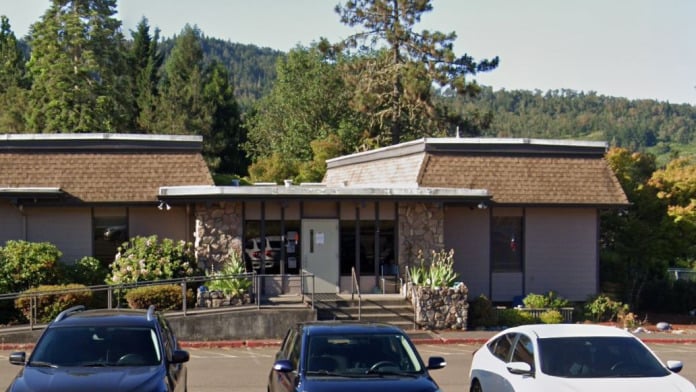Opioids are a class of drugs that includes prescription medication used to alleviate pain as well as illegal drugs, such as heroin and illicitly-made fentanyl. Opioid drugs work by attaching to the opioid receptors in your brain and producing a euphoric effect while relieving pain. The euphoric effect of opioids is one of the reasons why opioid addiction impacts over 2 million Americans.1 Understanding the signs and symptoms of opioid addiction will help you discern whether you or someone else may benefit from an opioid rehab program.
Signs of Opioid Addiction
If someone you love has an opioid addiction, they may be trying to hide it from you or not being completely honest about their condition. You can look for signs if you are wondering if someone you love has an opioid addiction. These signs can be physical, psychological, and behavioral.
Physical
Opioids can negatively impact one’s physical health, so you may see some signs of changes in your loved one’s appearance. You can look for some of these physical signs:2
- Changes to your loved one’s physical appearance and/or hygiene
- Small or constricted pupils
- Weight loss or weight gain
- Scars or track marks on the arm showing signs of intravenous drug use
Psychological
Aside from physical changes, you may notice some of the following psychological signs in your loved one if they are addicted to opioids:2
- Mood swings
- irritability
- Acting nervous, anxious, or paranoid
- Moments of euphoria or giddiness
- Being lethargic or “on the nod”
Behavioral
You may notice some more obvious signs, like changes in your loved one’s behavior. You can look out for some of these things:
- A marked difference in attitude or usual personality
- Avoiding friends and family
- Withdrawing from hobbies and activities they used to enjoy
- Poor performance at work or school
- Hiding and lying to friends and family
- Stealing
If you are wondering if you have an opioid addiction, you can consult the Diagnostic and Statistical Manual of Mental Disorders, Fifth Edition (DSM-5), which outlines the criteria for opioid use disorder. The symptoms typically include:
- Using opioids for longer or in greater amounts than planned
- Using opioids in dangerous situations, such as while driving
- Experiencing strong cravings to use opioids
- Wanting to quit or moderate use but unable to do so
- Continuing to use opioids despite the knowledge that it is causing or worsening physical or psychological problems
- Continuing to use opioids despite the knowledge that it is causing or worsening interpersonal or social issues.
- Spending a significant amount of time obtaining and using the opioid, as well as recovering from its effects
- Struggling to fulfill obligations at home, school, or work
- Neglecting previously enjoyed hobbies or activities because of opioid use
- Experiencing a tolerance, meaning you need higher doses to feel the drug’s full effect
- Experiencing opioid withdrawal symptoms when you abruptly quit or reduce your dose
Opioid Dependence vs. Addiction
Opioid dependence is different from addiction. You become physically dependent on opioids when your body adapts to having the drug in your system and requires it to function.4 When you continue to use opioids, your body will grow tolerant—needing more of the drug to produce the same euphoric effects. Over time, this can lead to dependence, which means if you try to stop using the opioid, you can experience withdrawal symptoms. This can happen to people who are taking opioids medically and don’t necessarily indicate an addiction; however, if you are misusing opioids, then physiological dependence is a sign of opioid addiction.
An opioid addiction differs from dependence, because it refers to the chronic use of the drug and the inability to stop using it, regardless of the negative impact it is having on your life.
Who is at Risk of Opioid Addiction?
Opioids, such as hydrocodone, codeine, oxycodone, and morphine, are often prescribed to treat chronic pain or for those who have acute pain, such as recovering from surgery or injury. If you have been prescribed an opioid to manage pain, you may be at risk for opioid addiction.
Other factors that increase your risk of opioid addiction include:1,5
- Genetic differences in the structure of the opioid receptors in your brain
- A history of substance misuse
- Psychiatric disorders such as anxiety and depression
- Experiencing abuse or neglect in your childhood
- Certain personality traits that lead to impulsivity and risk-taking
- Living in poverty or a rural area
- Being around others who misuse opioids
- Easy access to prescription or illegal opioids
- Taking higher doses of opioids, even when prescribed
- Taking opioids for a long time, even when prescribed
- Younger adults aged 18-25 years old have a higher risk of misuse
If you fall into any of these categories, it does not mean you will have an opioid addiction, but it does mean you are at a higher risk of developing one. Opioid addiction is a treatable condition, and the sooner you find opioid addiction treatment, the better your recovery outcome will be.
Opioid Addiction Treatment Options
Medical Detox for Opioid Withdrawal
The first step in treating your opioid addiction is through undergoing a medical detox. This is the process your body goes through when the amount of opioids in it lessens over time due to the natural detoxification process of the body. As mentioned, if you are dependent on opioids, you can experience unpleasant and distressing withdrawal symptoms during detox. These may include:6
- Feeling agitated or anxious
- Achy muscles
- Teary eyes and runny nose
- Trouble sleeping or restlessness
- Excessive sweating
- Abdominal issues like cramping, nausea, vomiting, and diarrhea
- Chills
Because opioid withdrawal symptoms can be very unpleasant, medical detox may be necessary. Medical detox involves 24/7 medical care, oversight, and supervision, including opioid withdrawal medications, to ease withdrawal symptoms and keep you comfortable throughout the withdrawal process. Once detox is complete, you will still likely need ongoing treatment to help with the underlying issues associated with your opioid addiction. Detox does not remove the cravings or desire to use opioids, so additional treatment is needed.
Inpatient Treatment
A very effective treatment option for opioid addiction is inpatient care. Inpatient treatment is when you receive around-the-clock care from a team of medical and mental health professionals, with most programs lasting between 30 to 90 days. This level of treatment provides intensive and thorough care since you remain at the facility overnight and attend frequent treatment sessions throughout your stay.
Inpatient treatment can include:
- Individual therapy, including cognitive behavioral therapy (CBT)
- Group and/or family therapy as needed
- Education about opioids
- Relapse prevention planning
- Support group meetings
- Medication-assisted treatment, if needed
- Aftercare planning
Outpatient Treatment
Outpatient treatment is another effective treatment option. It differs from inpatient treatment, because you attend treatment sessions during the day but return to your own residence overnight. Outpatient is more beneficial if you need more flexibility in your treatment plan due to work, family obligations, or school. Outpatient treatment usually involves the same treatment interventions as inpatient treatment, but on a less intensive level.
Your treatment team will assess what level of care you need for your opioid addiction. You should consider some of the factors to discern if outpatient treatment is right for you:
- What kind of support system do you have at home?
- Will your home environment be mostly free of triggers while you are trying to recover?
- Are you at a point in your recovery where you can cope with triggers on your own?
- Have you had previous relapses?
Medication-Assisted Treatment
Medication-assisted treatment (MAT) is also a treatment option for those with opioid use disorder. This type of care includes a combination of addiction treatment medications and counseling to provide comprehensive treatment. Some of the medications commonly used are methadone, buprenorphine, naltrexone, and Suboxone.
Research has shown that these medications are effective in helping people recover from an opioid addiction.7 They can help reduce cravings for opioids, block the euphoric effects of the drug, and alleviate withdrawal symptoms. Many people receive long-term methadone maintenance to manage their opioid addiction.
Aftercare and Ongoing Support
When you leave rehab, your recovery process does not end. Most treatment teams will work with you to create an aftercare plan that helps you continue your recovery from opioid addiction after your completed treatment program. Aftercare plans will be specific to your needs but may include:
- Continuing to return to your treatment facility for follow up appointments
- Staying in a sober living home for some time
- Attending recovery group meetings like Narcotics Anonymous (NA), or others
- Creating a support network of mentors and peers
- Engaging in ongoing individual and/or group therapy
- Following up with your doctors on any medication-assisted treatment you are receiving
Ongoing support and aftercare are important parts of the recovery process to prevent relapse and to help you find quick treatment if you do find that you’ve relapsed.
If you or someone you know has an opioid addiction, please call
800-914-7089
(Sponsored)
to get help today.
Resources
- U.S. National Library of Medicine. (2017, November 1). Opioid addiction.
- New York State Department of Health. (2017). Opioids: Recognizing the Signs.
- American Psychiatric Association. (2013). Diagnostic and statistical manual of mental disorders (5th ed.).
- National Institute on Drug Abuse. (2020, December 2). Is there a difference between physical dependence and addiction? National Institutes of Health.
- United States Department of Labor. (n.d.). Risk Factors for Opioid Misuse, Addiction, and Overdose.
- U.S. National Library of Medicine. (2020, May 10). Opiate and opioid withdrawal.
- National Institute on Drug Abuse. (n.d.). Opioids.

